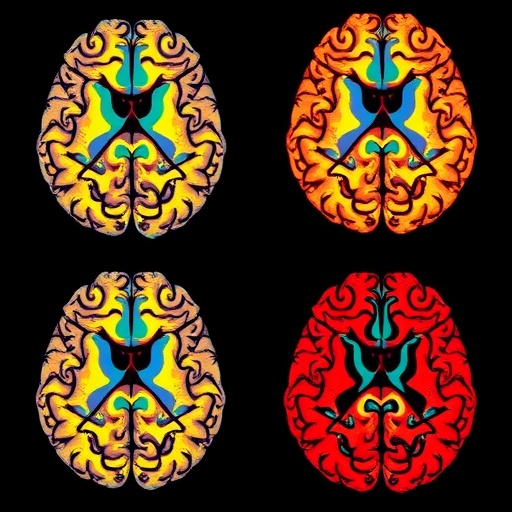In a groundbreaking study published in Gene Therapy, researchers led by Rodgers and Ward have presented a novel gene therapy designed to combat Duchenne muscular dystrophy (DMD), a devastating genetic disorder that leads to progressive muscle degeneration and weakness. The innovative approach involves a codon-optimized version of the human Smad7 gene, providing significant insights into potential therapeutic strategies that could boost muscle mass and enhance functionality in affected patients. This research may not only pave the way for advanced treatments for DMD but also open doors for similar strategies in other muscular disorders.
Duchenne muscular dystrophy primarily affects young boys, causing muscle fiber degeneration and consequent inability to walk by their early teen years. As the disease progresses, cardiac and respiratory muscles also become involved, significantly reducing life expectancy. Current treatment options are limited, focusing mainly on corticosteroids that provide modest benefits. However, these treatments cannot halt the progression of the disease, highlighting the urgent need for innovative therapies that can regenerate or protect muscle fibers.
The study’s focus on the Smad7 gene is particularly important, as this gene plays a critical role in the regulation of muscle growth through inhibition of the transforming growth factor-beta (TGF-β) signaling pathway, which is known to contribute to muscle wasting in various conditions. By optimizing the codons of the Smad7 gene, the researchers aimed to enhance its expression levels, thus maximizing its therapeutic potential while minimizing possible side effects associated with lower-dose counterparts.
In laboratory tests conducted on murine models of Duchenne muscular dystrophy, the treatment involving the codon-optimized Smad7 gene showed impressive results. The mice treated with this gene therapy demonstrated notable increases in skeletal muscle mass. Their enhanced muscle function was validated through various assessments, including strength tests and endurance trials, both of which revealed profound improvements compared to untreated control groups.
The implications of such enhancements go beyond mere numbers; they represent a paradigm shift in how muscular dystrophies might one day be treated. Enhanced muscle mass through targeted gene therapy not only promises improved physical capabilities but also suggests a potential pathway for longer-term health and better quality of life. These results are even more encouraging considering that they come from genetic interventions, which often face skepticism regarding their safety and efficacy.
Researchers accounted for various factors when analyzing the outcomes of the gene therapy. They assessed the delivery mechanism of the codon-optimized Smad7 gene using adeno-associated virus (AAV) vectors, which are known for their safety and efficiency in targeting muscle tissue. This selection reflects a critical aspect of gene therapy: the choice of delivery method, which often is a central determinant of therapeutic success.
Moreover, the findings were corroborated by thorough histological analyses, whereby muscle biopsies revealed reduced fibrosis and improved muscle architecture in treated mice. The reduced presence of fibrous tissue is significant, as its accumulation is often linked to the disease’s severity and the loss of muscle fibers. Thus, by not only increasing muscle mass but also promoting healthier muscle tissue, Smad7 gene therapy offers a dual benefit that could be pivotal in the context of DMD treatment.
Another notable aspect of the study was the careful consideration of the timing of gene therapy administration. The researchers discovered that early intervention enabled more profound effects on muscle regeneration. Timing is often a critical factor in the treatment of genetic disorders, especially those that are progressive in nature. The findings point to the possibility that gene therapies like the one explored here may need to be applied as early as possible to grind down the disease’s deleterious progression.
The research team expressed hopes that their studies and results will prompt clinical trials in human subjects. Spanning international collaborations, the transition from animal models to human applications will be crucial in validating these promising initial findings. The success of such trials may not only bring about a revolutionary treatment for DMD but could set standards for addressing various muscle degenerative diseases in general.
To give context to the broader relevance of their findings, the study underscores a critical move within the field of gene therapy. Increasingly, researchers are recognizing the necessity of building robust genetic frameworks and utilizing them effectively to tackle widespread genetic disorders. This study serves as a beacon of hope and innovation, illustrating that through advanced technology like codon optimization, researchers can push the boundaries of traditional gene therapy towards more effective and adaptive solutions.
As news of these findings circulates in scientific and medical communications, they promise to spark considerable interest within the medical community, fostering discussions about next-generation therapies. The overarching hope is that such research encourages more funding and attention towards gene-based treatments, not just for muscular dystrophies but for a myriad of genetic conditions affecting vast populations.
In conclusion, the study showcasing the codon-optimized human Smad7 gene therapy has revealed extremely promising results in enhancing skeletal muscle mass and function in a murine model for Duchenne muscular dystrophy. The integration of advanced genetic engineering techniques combined with robust experimental assessments unveils new horizons for treating one of the most challenging genetic conditions known. These efforts could profoundly impact the lives of countless individuals affected by DMD and signal a bright future for gene-based therapies in the fight against muscle degenerative diseases.
Subject of Research: Duchenne muscular dystrophy and gene therapy
Article Title: Codon-optimized human Smad7 gene therapy enhances skeletal muscle mass and function in a murine model of Duchenne muscular dystrophy.
Article References:
Rodgers, B.D., Ward, C.W. Codon-optimized human Smad7 gene therapy enhances skeletal muscle mass and function in a murine model of Duchenne muscular dystrophy.
Gene Ther (2025). https://doi.org/10.1038/s41434-025-00583-0
Image Credits: AI Generated
DOI: 25 November 2025
Keywords: Duchenne muscular dystrophy, gene therapy, Smad7, skeletal muscle mass, adeno-associated virus, codon optimization.
Tags: advanced therapies for muscle diseasescodon-optimized gene therapygene therapy for Duchenne muscular dystrophygroundbreaking studies in gene therapyinnovative treatments for muscular disordersmuscle degeneration and regenerationmuscle mass enhancement in patientspediatric muscular dystrophy researchreducing muscle weakness in genetic disordersSmad7 gene and muscle growthTGF-β signaling pathway inhibitiontherapeutic strategies for DMD





